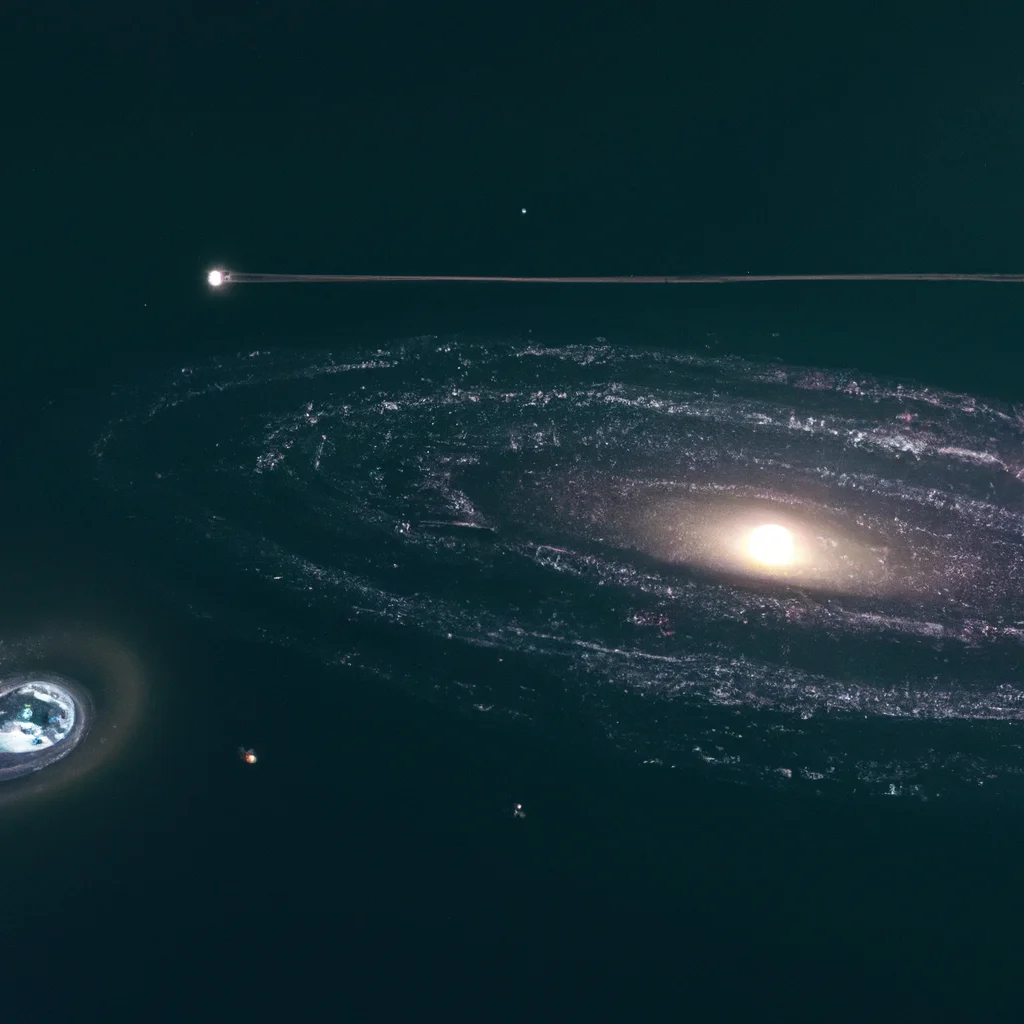How does gravitational lensing help astronomers study distant galaxies?


How does gravitational lensing help astronomers study distant galaxies?
Gravitational lensing is a phenomenon that occurs when the gravity of a massive object, such as a galaxy or a cluster of galaxies, bends and distorts the light from a more distant object, such as a quasar or a galaxy behind it. This effect can be used by astronomers to study distant galaxies that would otherwise be too faint or too small to be observed directly. In this article, we will explore how gravitational lensing helps astronomers study distant galaxies and what insights it provides into galaxy research.
What is gravitational lensing?
Gravitational lensing was first predicted by Albert Einstein’s theory of general relativity in 1915. According to this theory, gravity is not just a force between masses but also a curvature of spacetime. When a massive object is present, it creates a curvature in spacetime that affects the path of light passing nearby. This effect can cause the light to bend and follow a curved path, just like a lens in a telescope.
Gravitational lensing can be divided into two main types: strong lensing and weak lensing. Strong lensing occurs when the light from a distant object is highly distorted and produces multiple images of the same object around the lensing mass. Weak lensing occurs when the distortion is more subtle and affects the shape and orientation of the background object.
How does gravitational lensing help astronomers study distant galaxies?
Gravitational lensing is a powerful tool for astronomers to study distant galaxies that would otherwise be too faint or too small to be observed directly. By using the gravitational lensing effect, astronomers can magnify the light from these distant galaxies and study their properties in detail.
One of the main applications of gravitational lensing is to measure the mass of galaxies and galaxy clusters. By observing how the light from a background object is distorted by the gravity of a foreground galaxy or cluster, astronomers can infer the mass of the lensing object. This is because the amount of distortion depends on the mass and distribution of the lensing object. By combining these measurements with other observations, such as the motion of stars or gas in the lensing object, astronomers can build a more complete picture of the structure and evolution of galaxies and galaxy clusters.
Gravitational lensing can also be used to study the dark matter distribution in galaxies and galaxy clusters. Dark matter is an invisible and mysterious substance that makes up most of the mass in the universe. It does not interact with light or other forms of electromagnetic radiation, making it difficult to observe directly. However, its gravitational effects can be detected through gravitational lensing. By observing how the light from a background object is distorted by the gravity of a lensing object, astronomers can map the distribution of dark matter in the lensing object. This provides valuable information about the nature and properties of dark matter and its role in the formation and evolution of galaxies and galaxy clusters.
What insights does gravitational lensing provide into galaxy research?
Gravitational lensing has provided many insights into galaxy research, including the following:
– The distribution of dark matter in galaxies and galaxy clusters: Gravitational lensing has revealed that the distribution of dark matter is not always the same as the distribution of visible matter in galaxies and galaxy clusters. This suggests that dark matter interacts differently with gravity than visible matter and may have different properties.
– The mass and structure of galaxies and galaxy clusters: Gravitational lensing has provided accurate measurements of the mass and structure of galaxies and galaxy clusters, revealing complex and dynamic structures that cannot be observed directly.
– The evolution of galaxies and galaxy clusters: Gravitational lensing has shown that galaxies and galaxy clusters evolve over time through mergers and interactions, leading to the formation of larger structures and the redistribution of matter.
– The nature of dark energy: Gravitational lensing can also be used to study the effects of dark energy, a mysterious force that is accelerating the expansion of the universe. By measuring the distortion of background objects caused by the gravity of galaxies and galaxy clusters, astronomers can study the distribution and properties of dark energy and its effects on the universe.
In conclusion, gravitational lensing is a powerful tool for astronomers to study distant galaxies and galaxy clusters. By using the gravitational lensing effect, astronomers can magnify the light from these objects and study their properties in detail, providing valuable insights into the structure, evolution, and properties of galaxies and the universe as a whole.
Recent Posts
How do I create an engaging and informative online quiz or assessment?
Creating an engaging and informative online quiz or assessment can be a powerful tool for… Read More
What are the most effective methods for managing and reducing work-related stress in the hospitality industry?
Work-related stress is a common issue in the hospitality industry, where employees often face long… Read More
How can I improve my assertiveness and communication skills in a leadership position?
In a leadership position, assertiveness and effective communication skills are crucial for success. Being able… Read More
What are the key elements of a successful employee recognition and rewards program?
Employee recognition and rewards programs play a crucial role in motivating and engaging employees, as… Read More
How do I effectively manage and respond to customer feedback and reviews?
Customer feedback and online reviews play a crucial role in shaping a company's reputation and… Read More
What are the best strategies for effective time management as a stay-at-home parent?
Effective time management is crucial for stay-at-home parents who juggle multiple responsibilities on a daily… Read More